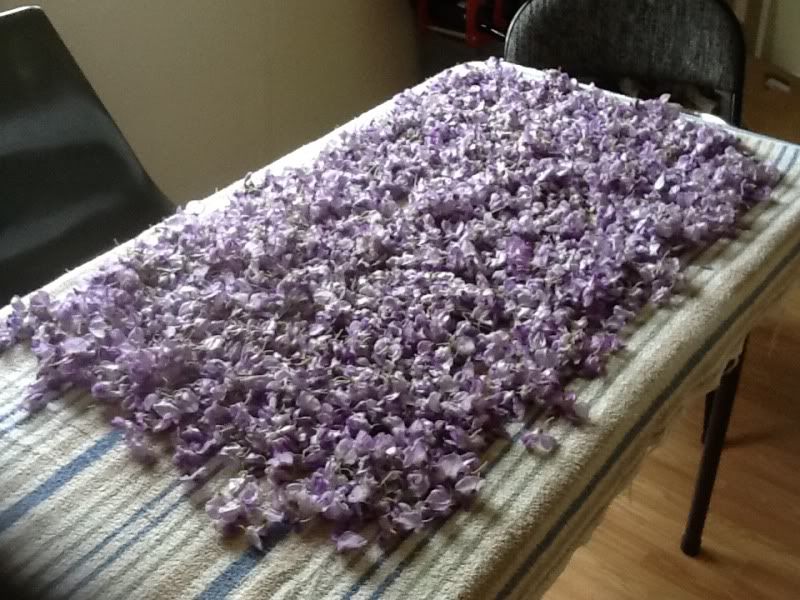Wisteria
Just as I was leaving Athens, I could see lilac flowers starting to develop; compact, green-brown spikes. Syringa is hard plant to leave behind, especially as it begins what promises to be a spectacular spring. With our stunningly mild winter, plus a moist and early spring, all of nature is "biting at the bit" (well, most of nature, anyways - violets are surprisingly patient in regards to their bloom time). Still, I was comforted upon my arrival in Carrboro by a vine that is downright rare in Ohio, but abounds here in North Carolina, Wisteria.
 |
| One cluster of flowers. |
 |
| All these flowers fit into four mason jars along with 12 cups of honey! |
Wisteria grows here in abundance. It likes wood edges and scrubby fields, and prefers to have its feet wet. Driving down the road, the flowers are a thick purple fog covering the trees. It rolls, too, starting its bloom from the tops of the canopy, moving down the ground. Watching it over the course of a week, I notice a color change as it progresses, with the flowers growing lighter in color everyday. The blossoms are violet before they open, becoming a light purple with white during the flowering, and fading to nearly gray. I feel a pang of sadness to see those once purple flowers droop and wilt into grayness, but today as I drove home the emerging leaves of the trees seemed to grow out and hide the old wisteria, and I feel the thrill of spring's awakening again in my heart.
This week, I've gone out twice to collect Wisteria flowers from the wood behind my apartment. It eases my transition to continue a spring tradition of gathering flowers, infusing them to honey, and using it to make mead. I've found that a ratio of 5 to 3 (flowers to honey, in cups) fits snugly in a quart mason jar. The jars should be turned quite regularly to ensure that the concoction is mixed. I notice that after a day or two, the honey becomes noticeably watery and the flowers use less space in the jar. I infused four jars in this way, and then collected again a couple days later to double infuse the same four. Before I added fresh flowers, though, I heated the flower-honey mixture in a double boiler, and then strained and pressed the flowers. The honey is very watery now. Soon I will remove all the flowers and begin the mead.
 |
| Blood honey, ma. |


Comments